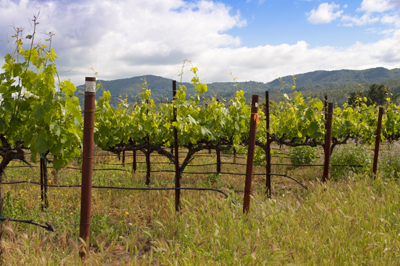 Making wine from grapes is, at its heart, a simple natural process. (See That Great Gift of Nature We Call – WINE Part 1) Making wine today has become a unique blend of art and science, as winemakers have learned how to manipulate and control nature’s basic good idea.
Making wine from grapes is, at its heart, a simple natural process. (See That Great Gift of Nature We Call – WINE Part 1) Making wine today has become a unique blend of art and science, as winemakers have learned how to manipulate and control nature’s basic good idea.
To make good wine, you need good grapes. There is a saying in wine country, “Wine is made in the vineyard”. Without good fruit to begin with, there is little possibility of good wine. The grape grower needs to pick the grapes at optimal ripeness. This is not as simple as it sounds, as different components in that complex liquid, grape juice, reach their optimal ripeness at different times. To give the wine strength, the wine maker wants maximum sugar. To give the wine complexity, the wine maker wants some of the other natural components of the grapes – acids, phenols, bioflavenoids, and others we are still discovering – at their peak. Monitoring these different aspects of ripeness is a crucial preoccupation of wine makers as the fall harvest season progresses.
The amount of sugar in the grapes determines the amount of alcohol in the finished wine. One peculiar fact of nature is that the alcohol in wine is toxic to the yeasts that are essential to its making; most yeasts die when the alcohol content reaches 12 to 13%, so there is a natural limit on the amount of alcohol a wine can maintain. Scientists have experimented with developing new strains of yeast that can survive alcohol concentrations as high as 17%, so many modern wines are much higher in alcohol than older traditional wines ever were. Note particularly that new world Cabernet Sauvignon, Zinfandel and Syrah tend to have much higher alcohol content than old world burgundies, Bordeaux and chiantis, for example.
It didn’t take wine makers long to figure out that, if grapes are less than optimally ripe, the alcohol content of the wine can be increased by simply adding sugar to the fermenting grape juice. This process is known as chaptaliztion, named after the French minister of agriculture who first authorized it (more to support sugar beet farmers than to help the wine makers!) But remember, it is not just the sugar in the grapes that contributes to the quality of the finished wine, so excessive chaptalization may add alcohol but lead to a dumb wine.
The finished wine, then, may be about 12 to 15% alcohol – with many exceptions beyond that range. As it began as grape juice, it is also about 85% water. So that leaves the finished wine something like this:
85% water + 13% alcohol + 2% other stuff = 100% wine
or
83% water + 14% alcohol + 3% other stuff = 100% wine
The “other stuff” is a complex mixture of organic chemicals either found in the grape juice or formed in the wine. Literally thousands of these chemicals have been identified; they include: acids, tannins, esters, phenols, aldehydes, other types of alcohols and sugars, and many others.
It is this last little bit, the 2 to 3% of ‘”other stuff” that is responsible for much of the character of the wine, that separates great wine from ordinary plonk, that gives complexity and uniqueness to a wine, that determines whether or not a wine will age gracefully to greatness.
